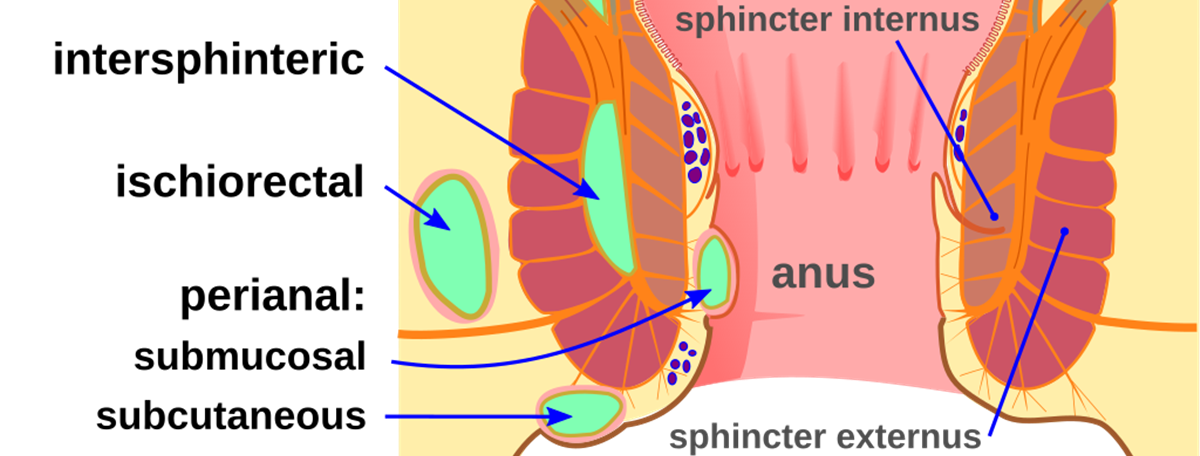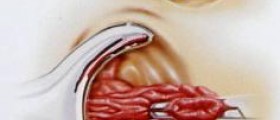If the anal abscess splits, an anal fistula commonly develops on the crack. A little channel, a tract that may occur in between the anal canal, is called an anal fistula. An anal fistula may bleed and have a painful discharge due to stooling.
There are simple fistulas, and complicated fistulas divaricate into a few tracts. Several fistulas may be linked with the sphincter muscles (muscles around the opening of the anus).

Anal fistulas are more usual for men 20-40, in England often as 1 to 3 cases in 10 000 patients. There are conditions such as Crohn's disease and IBS (irritable bowel syndrome) that may have a splitting anus effect on the intestines. According to some data, Crohn’s disease may have a higher percentage (30 to 50) to get an anal fistula. About 30% of patients with AIDS may get an anal fistula as well.
Anal Fistula Treatment
If left untreated, the anal fistula can not heal on its own. There was research done recently to exploit non-surgical methods. But, of course, there is a surgery that uses different methods to treat fistula, depending on the spot where it is developed and the severity.
After the surgery, it is not rare for the anal fistula to come back. With the most common anal fistula surgery, a fistulotomy, there is a chance for the fistula to reappear again at about 21%.
- The annual incidence of anal fistula varies from 10–30/100.000 with a sex ratio of 2–3 men per woman. The average age of onset is between 20 and 50 years.
- The primary endpoints were long-term closure rate and recurrence rate after 2 years. Secondary endpoints were persistent pain, postoperative complications and continence status.
- A total of 65 patients were included. From a total amount of 93 operations, 65 were fistulotomies, 13 mucosal advancement flaps, 7 anal fistula plugs and 8 cutting-setons.
- The mean follow up was 80 months. Healing was achieved in 85%. The highest recurrence rate was seen in anal fistula plug with 42%.
- In all 93 operations (100%) carried out with different surgical techniques, there was no difference in continence status between the patients with a mean Wexner Score of 0. Furthermore, there was no postoperative pain nor faecal incontinence neither for gas nor fluids in the long-term follow up.
Anal Fistula Complications
There is a risk to get an infection of the anal fistula after the surgery. Having surgery on such a sensitive spot, it is possible that the fistula is not removed totally, because surgery includes a few stages. Also, it is possible that the channel of the tract spread onto other body parts. Treating infections includes using antibiotics. If the infection is complicated, a patient needs to go to the hospital and get antibiotics intravenously.
Surgery can be dangerous because it may destroy the muscle ring around the opening of the anus. If the muscles are severely damaged feces may be leaking without any control from the rectum. This condition is called bowel incontinence or fecal incontinence. If such a condition is not new for the patient, it is possible only after the surgery to have even more complications.
Female patients with Crohn's disease are at more risk to have fecal incontinence after fistulotomy surgery. The complications may cause inflammation and swelling of the digestive system. There are techniques in surgery that increase the possibility of complications after the surgery of an anal fistula; those are an advancement flap procedure (6-8%) and set-on techniques (17%).
Reappearance of anal fistula after fistulotomy is about 21%, and after the advancement flap procedure, the rate of the reappearing fistula may even be 36%.
- www.nhs.uk/conditions/anal-fistula/
- www.nhs.uk/conditions/anal-fistula/treatment/
- Photo courtesy of McortNGHH by Wikimedia Commons: commons.wikimedia.org/wiki/File:Abscess_diag_02.svg
















Your thoughts on this
Loading...